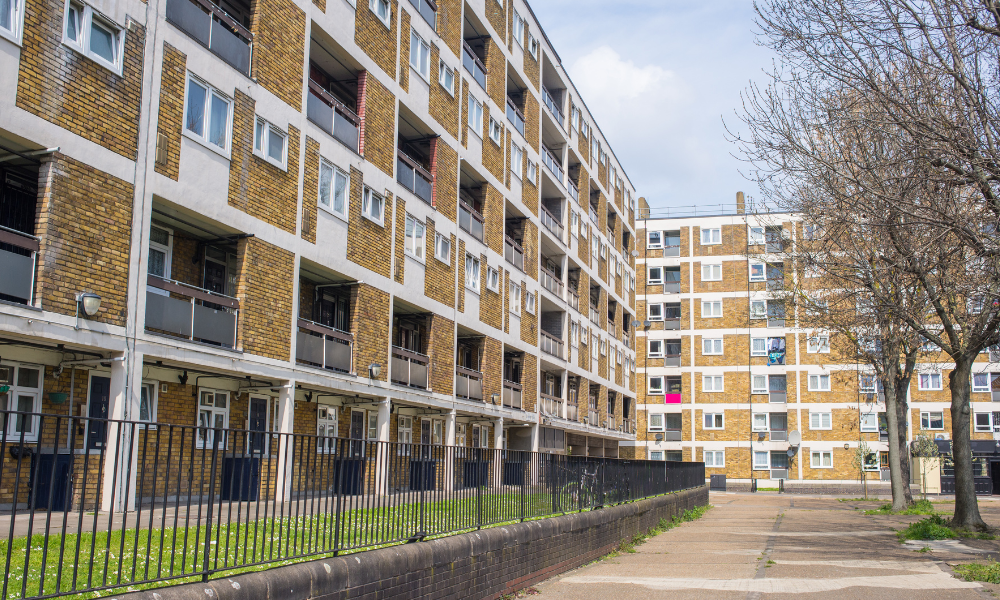
Letter from London
Our Labour government’s love-hate relationship with planning continues to stimulate and/or baffle those who taking an interest in the politics of the built environment, writes Paul Finch.
Proposed legislation will limit the number of statutory consultees in the planning process, including quangos, many of which have been created or supported by Labour in the past, but which it now claims are a threat to the much-vaunted ‘growth agenda’ – which shows little sing of materialising so far.
Labour seems to have forgotten its own history in ways of approaching housing and city regeneration – scarcely if at all mentioning the only serious government work on this subject in recent decades, the Richard Rogers Urban Renaissance report (1999), which provides a well-considered proposition about how to create housing and revitalise cities.
Currently, Labour has no independent body at is disposal to which it can turn on these matters. This is curious for a party that, shortly after forming its first ever UK government, created the Royal Fine Art Commission in 1924. Seventy-five years after Ramsay MacDonald, Tony Blair’s first government replaced this with the Commission for Architecture & the Built Environment. This was eventually scrapped by an incoming Conservative administration, which also trumpeted a ‘bonfire of the quangos’ message.
Labour is currently fiddling with the UK National Planning Policy Framework as though it comprises the planning system, when in fact it was created in 2012 to cut through the Sargasso Sea of policies which have slowed down a system which has not changed fundamentally since its creation in 1947.
More usefully, funding has been pledged for an additional 300 planning officers, which will supposedly speed up permissions. As far as housing is concerned this is welcome news, because, we are heading for yet another historic low in both applications but more pertinently completions, making the government’s electoral pledge to deliver 1.5 million homes in its electoral lifetime look even less likely.
Clearly there will be some fudging of figures as the next election nears, plus a new blame game of why targets are not being met. Things to look out for include the absence of the phrase ‘net additional’ in relation to housing figures. If a local authority estate is regenerated and, say, 500 homes are renewed, with 50 new dwellings added, the net additional is 50. I am anticipating that government figures will show 550.
Since net inward migration is likely, according to official forecasts, to result in a population increase of five million by 2040, housing shortfalls will exacerbate a disastrous situation, increase social tension, and magnify intergenerational inequity. Hey ho.
Another thing to watch out for will be a gradual switch from figures about completed homes to applications and approvals. This will then result in claims that housebuilders are ‘sitting on sites’ and ‘profiteering’ from not starting construction where permission has been granted. This accusation will happen partly because the political class has never understood the business model of housebuilders, and has no idea why they would not rush to build when there is scant demand – not because of a shortage of people who need housing, but because of mortgage availability and conditions, average salaries and so on.
The fantasy that the private sector can, would or even should deliver a public sector programme (for which read that often-bogus phrase ‘affordable housing’) continues to inform Labour thinking. They are proud of the fact that multiple applications have been made by organizations who want to development a so-called ‘new town’ in their area, but are short on detail when it comes to how these will be funded and delivered.
Real new towns are dependent on new infrastructure almost by definition. That takes a long time to deliver, and will not result in any significant denting of that 1.5 million homes target.
For an administration that is keen on growth ‘at pace’, the new government description of all its activities, Labour seems remarkably coy about seizing opportunities which can make things happen quickly. A good example is what is airport expansion, a tricky subject for Labour because of its previous prognostications about ‘net-zero’ and the artificial political posture of its former leader, Ed Miliband, on the subject. He hates aviation with a vengeance.
Nevertheless the Starmer government is backing Heathrow expansion plans with full support, even though it will take decades for anything to be delivered – and will involve destruction of villages, motorway construction nightmares, and further pursuit of a mad location for an international airport because of the requirement to fly constantly over a major city. Heathrow creates far more noise and other forms of pollution than any other capital city airport.
By contrast, the government is not (so far) giving a green light to the no-brainer expansion of London Gatwick. Instead, it has signalled amber, with more questions for the Gatwick owners to answer before a final decision this October. This is perverse, because Gatwick can increase its aircraft movements (take-off and landing) from 55 to 70 per hour – if it is allowed to move an existing emergency runway 12 metres, to comply with international aviation rules. This runway will then be able to be used full-time, hence the increase in capacity. This project could be built without undue difficulty, and probably within this government’s lifetime, generating a huge increase in jobs.
Why not get on with it?
Founder Partner






